The lost one never returned home.
Similarly, Makoi did not return to the old
homeland [E:37, E:86].
... The Pirt-Kopan-noot tribe of Australia have a
legend of a Lost Pleiad, making this the queen of
the other six, beloved by their heavenly Crow, our
Canopus, and who, carried away by him, never
returned to her home ...
|
Hau Maka |
Hua Tava |
|
Ira |
Raparenga |
Ngukuu |
Ringiringi |
Nonoma |
Uure |
Makoi |
The Chinese connected their 19th creature Crow not with Canopus (*95)
but with the Eye of the Bull (Ain, ε Tauri, *65).
... A
man had a daughter who possessed a wonderful bow and
arrow, with which she was able to bring down
everything she wanted. But she was lazy and was
constantly sleeping. At this her father was angry
and said: 'Do not be always sleeping, but take thy
bow and shoot at the navel of the ocean, so that we
may get fire.'
The navel of the ocean was
a vast whirlpool in which sticks for making fire by
friction were drifting about. At that time men were
still without fire. Now the maiden seized her bow,
shot into the navel of the ocean, and the material
for fire-rubbing sprang ashore ...
The Crow seems to have been a bird carrying sweet
water (vai-ora) at the beginning of the front
side
- in the day
after the one who was lost (who never showed up),
who had expired.
...
There
is a couple residing in
one place named Kui
and Fakataka.
After the couple stay
together for a while
Fakataka is
pregnant. So they go
away because they wish
to go to another place -
they go. The canoe goes
and goes, the wind
roars, the sea churns,
the canoe sinks. Kui
expires while
Fakataka swims
...
|
March
equinox |
|
14 |
Wall |
γ Pegasi
(Algenib) |
Porcupine |
March 22
(81) |
 |
|
15 |
Legs |
η
Andromedae |
Wolf |
Apr 1
(91) |
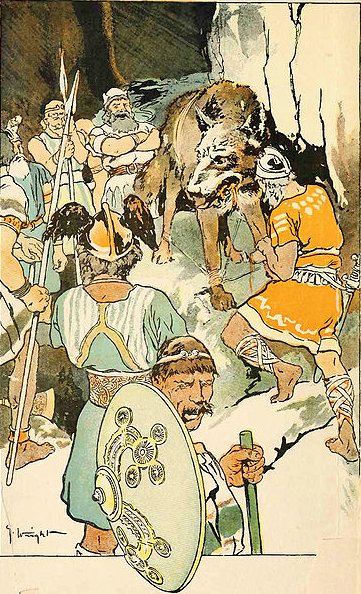 |
|
16 |
Bond |
β Arietis
(Sheratan) |
Dog |
Apr 17
(107) |
|
17 |
Stomach |
41
Arietis (Bharani) |
Pheasant |
May 1
(121) |
|
18 |
Hairy Head |
η Tauri (Alcyone) |
Cockerel |
May 16
(136) |
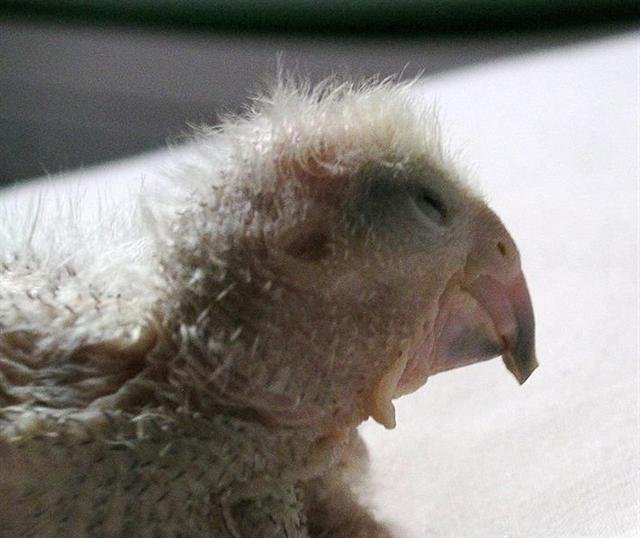 |
|
19 |
Net |
ε Tauri
(Ain) |
Crow |
May 25 (145) |
 |
Similarly, the
banana variant
ri'o
had evidently (i.e. according to Manuscript E)
been lost (gone missing) in the list of
necessities for life loaded onbord the Royal Double Canoe
[E:67-68].
|
MARCH 8
(432) |
12
|
0h |
364 |
MARCH 21 (*365) |
|
 |
no glyph |
 |
|
Gb8-18 (230) |
Gb5-12 (365) |
|
"March 31 |
"April 13 |
"April 13 |
|
14 + 364 = 378 |
HYADUM II (*64) |
|
- |
origo (ri'o) |
1 he
koro tea. |
2 he hihi. |
3 he
pukapuka. |
|
Maika. Banana (Musa
sapientum). Ancient varieties were
called ri'o, hihi, korotea, pia,
pukapuka, naho'o. Vanaga. Meika,
banana. Pau., Mgv.: meika, id.
Mq.: meika, meia, id. Ta.:
meia, id. Churchill.
Koro. 1. Father
(seems to be an older word than
matu'a tamâroa). 2. Feast, festival;
this is the generic term for feasts
featuring songs and banquetting; koro
hakaopo, feast where men and women
danced. 3. When (also: ana koro);
ana koro oho au ki Anakena, when I
go to Anakena; in case, koro
haga e îa, in case he wants
it. Vanaga. If. Korokoro, To
clack the tongue (kurukuru).
Churchill. Ma.: aokoro, pukoro,
a halo around the moon. Vi.: virikoro,
a circle around the moon. There is a
complete accord from Efaté through Viti
to Polynesia in the main use of this
stem and in the particular use which is
set to itself apart. In Efaté koro
answers equally well for fence and for
halo. In the marked advance which
characterizes social life in Viti and
among the Maori the need has been felt
of qualifying koro in some
distinctive manner when its reference is
celestial. In Viti virimbai has
the meaning of putting up a fence (mbai
fence); viri does not appear
independently in this use, but it is
undoubtedly homogenetic with Samoan
vili, which has a basic meaning of
going around; virikoro then
signifies the
ring-fence-that-goes-around, sc. the
moon. In the Maori, aokoro is the
cloud-fence. Churchill 2. |
|
MARCH
20 (*364) |
0h |
22
(*1) |
23 |
24
(83) |
 |
no
glyph |
 |
 |
 |
|
Gb8-30 (242) |
Ga1-1 |
Ga1-2 |
Ga1-3 |
|
Al Dabarān-2 (The Follower)
HYADUM I
= γ Tauri
(63.4)
*22.0 = *63.4 - *41.4 |
HYADUM II
= δ¹ Tauri
(64.2) |
Net-19 (Crow)
AIN
(Eye) =
ε Tauri,
θ¹
Tauri,
θ²
Tauri (65.7) |
no star listed (66) |
no star listed (67) |
|
...
There was no water in the village. The
lakes and rivers were dry. Raven and
Crow, two young girls who were having
their first menstrual courses, were told
to go and draw water from the ocean.
Finding the journey too long, Raven
decided just to urinate into her
basket-bucket. She decieved no one and
was severly scolded. Crow returned much
later but with drinking water. As a
punishment, Raven was condemned never to
find water in the summer; only in winter
would she find something to drink. For
that reason the Raven never drinks
during the hot months; she speaks with a
raucous voice because of her dry throat
... |
|
May
23 |
24
(12 * 12) |
25 (145) |
26
(*66) |
27 |
|
°May
19 |
20 |
21
(*61) |
22
(142) |
23 |
|
'April 26 |
27 |
28
(118) |
29
(*39) |
30 |
|
"April 12 |
13 |
14
(104) |
15
(*25) |
16
(471 = 314 * 1½) |
|
CLOSE
TO THE FULL MOON: |
|
SEPT
19 |
20
(*183) |
21
(264) |
EQUINOX |
23 |
|
YED POSTERIOR (Hand Behind) =
ε
Ophiuchi,
RUKBALGETHI SHEMALI
(Northern Knee of the Giant) =
τ
Herculis
(246.6).
δ
Apodis (246.7),
ο
Scorpii (246.8) |
Heart-5 (Fox)
σ Scorpii
(247.0),
HEJIAN = γ Herculis
(247.2),
ψ
Ophiuchi (247.7) |
ρ
Ophiuchi (248.1),
KAJAM (Club)
=
ω
Herculis
(248.3),
χ
Ophiuchi (248.5),
SHE LOW (Market Tower) = υ Ophiuchi,
Tr.
Austr. (248.7), ζ Tr. Austr. (248.8) |
Al Kalb-16 (The Heart) /
Jyeshtha-18 (Eldest) /
ANA-MUA-1 (Entrance pillar)
ANTARES
= α Scorpii
(249.1),
MARFIK (Elbow) = λ Ophiuchi,
φ Ophiuchi (249.5), ω Ophiuchi (249.8) |
γ Apodis (250.1), σ Herculis (250.3), θ
Tr. Austr. (250.6), τ Scorpii (250.7) |
|
...
Proclus informs us that the fox star
nibbles continuously at the thong of the
yoke which holds together heaven and
earth; German folklore adds that when
the fox succeeds, the world will come to
its end. This fox star is no other than
Alcor, the small star g near zeta
Ursae Majoris (in India Arundati,
the common wife of the Seven Rishis,
alpha-eta Ursae
...

... the lining up of Canopus with zeta,
more often with Alcor,
the tiny star near zeta (Tom Thumb, in
Babylonia the 'fox'-star) has remained a
rather constant feature, in Arabic
Suhayl and as-Sura. This is the 'birth'
of the valid representatives of both the
poles, the sons of Mitra and Varuna and
also of their successors
... |
|
Nov
22 |
23
(327) |
24 |
25 (*249) |
26 |
|
°Nov 18 |
19 |
20
(*244) |
21
(325) |
22 |
|
'Oct 26 |
27
(300) |
28 |
29
(*222) |
30 |
|
"Oct 12 |
13
(286) |
14 |
15
(*208) |
16 |
 |
|
...
This Hercules is male leader of all
orgiastic rites and has twelve archer
companions, including his spear-armed
twin, who is his tanist or
deputy. He performs an annual green-wood
marriage with a queen of the woods, a
sort of Maid Marian. He is a mighty
hunter and makes rain, when it is
needed, by rattling an oak-club
thunderously in a hollow oak and
stirring a pool with an oak branch -
alternatively, by rattling pebbles
inside a sacred colocinth-gourd or,
later, by rolling black meteoric stones
inside a wooden chest - and so
attracting thunderstorms by sympathetic
magic
... |
In April 9 (99) the Full Moon was at Spica which was
located exactly at Alcor. 16 days later the
unseparable pair would return to visibility, viz. in
April 25 (115). This was therefore the face value of
the 25th night of Vaitu Nui (Great Water),
when the Explorers sailed off towards Easter
Island.
|
... Once upon a time
there was an old woman who owned a great
potato field (mara) where she planted
her potatoes in spring and harvested them in
autumn. She was famous all around for her
many varieties of wonderful potatoes, and
she had enough of them to sell at the market
place. She planted her potatoes 7 in a row,
placing her foot in front of her as a
measure from one potato to the next. Then
she marked the place with a bean - which
would also give nourishment to the
surrounding potatoes. Next she changed
variety and planted 7 more followed by
another bean, and this was the pattern she
followed until all her 214 varieties had
been put down in their proper places. She
had drawn a map which she followed and from
where each sort of potato could be located
at the proper time for its harvest ...
... A crack opened up in the ground, and
the Rat was put down into the pit, to rest
there - he hakatopa i te kioe.ki raro
ki te rua.he hakarere -

(where) he was nourished by sweet potatoes.
- he hangai.hai kumara.
Thus he rose up
due to the Sweet Potato. - Ai ka hoa no.i
te kumara.te raa te raa. [E: 4 =
Tori 4] |
 |
18 |
 |
15 |
 |
57 |
 |
|
Gb6-26
(179) |
Gb7-17
(198) |
Gb8-2 (214) |
Ga1-29
(272) |
|
March 21
(445) |
April 9
(99) |
April 25 (115) |
June 22 (173) |
|
SIRRAH |
ADHIL
(*19) |
ρ Ceti
(*35) |
TEJAT
PRIOR (*93) |
|
ALCHITA
(*183) |
SPICA /
ALCOR |
*218 |
η
Sagittarii (*276) |
|
Sept 20
(263) |
Oct 9
(292) |
Oct 25 (*218) |
Dec 22
(356) |
|
"Febr 8
(39) |
27 (58) |
"March 15
(74) |
"May 12
(132) |
|
"Aug 10
(*142) |
"Aug 29
(*161) |
"Sept 14
(*177) |
"Nov 11 (*235) |
|
... In China, with
Capricornus, Pisces, and a part of
Sagittarius, it [Aquarius] constituted the
early Serpent, or Turtle, Tien Yuen;
and later was known as Hiuen Ying,
the Dark Warrior and Hero, or Darkly
Flourishing One, the Hiuen Wu, or
Hiuen Heaou, of the Han dynasty, which
Dupuis gave as Hiven Mao. It was a
symbol of the emperor Tchoun Hin, in
whose reign was a great deluge; but after
the Jesuits came in it became Paou Ping,
the Precious Vase. It contained three of the
sieu, and headed the list of zodiac signs as
the Rat, which in the far East was
the ideograph for 'water', and still so
remains in the almanacs of Central Asia,
Cochin China, and Japan ...

|
10 |
Girl |
ε Aquarii (Albali) |
Bat |
Jan 29 (394) |
 |
|
11 |
Emptiness |
β
Aquarii (Sadalsud) |
Rat |
Febr 9 (405) |
|
12 |
Rooftop |
α Aquarii (Sadalmelik) |
Swallow |
Febr 18 (184 + 230) →
Bharani |
|
...
Now birds and fishes are
born under the sign of
the Yin [Moon],
but they belong to the
Yang [Sun]. This
is why birds and fishes
both lay eggs. Fishes
swim in the waters,
birds fly among the
clouds. But in winter,
the swallows and
starlings go down into
the sea and change into
mussels ... |
|
13 |
House |
α Pegasi (Markab) |
Pig |
March 5 (179 - 115 = 64) |
|
...
In the morning of the
world, there was nothing
but water. The Loon was
calling, and the old man
who at that time bore
the Raven's name,
Nangkilstlas, asked
her why. 'The gods are
homeless', the Loon
replied. 'I'll see to
it', said the old man,
without moving from the
fire in his house on the
floor of the sea. Then
as the old man continued
to lie by his fire, the
Raven flew over the sea.
The clouds broke. He
flew upward, drove his
beak into the sky and
scrambled over the rim
to the upper world.
There he discovered a
town, and in one of the
houses a woman had just
given birth ...
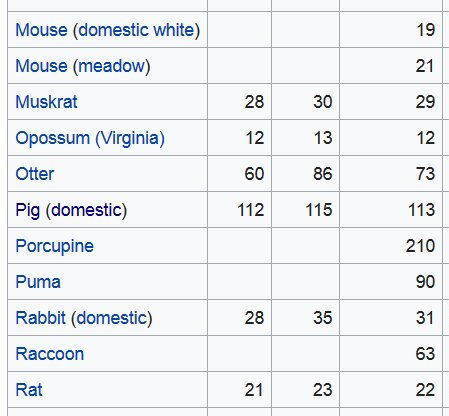 |
|
The dates in the Julian and Gregorian calendars
were defined from the cardinal points of the
Sun, not from the positions of the stars. But to
determine the cardinal points of the Sun it was
useful to look at the phase (face) of the Full
Moon - who always was
half a year away.
Alternatively one could look at the
culminations (at 21h in the epoch of rongorongo) of the leading stars, in
which case April 25 would be found at the
thirsty Mouth of the Fish - Fom-al-Ha(u)t:

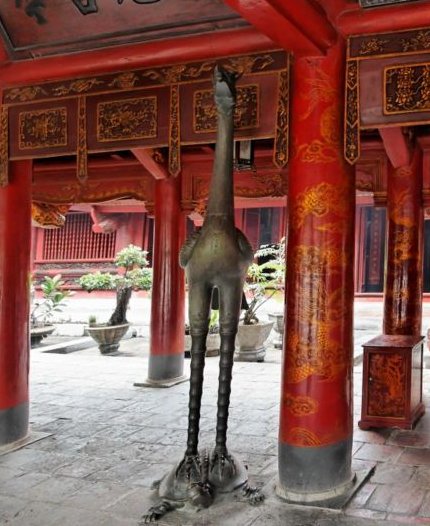
...
Horapollo, the grammarian of Alexandria, about
AD 400, tells us that the crane was the symbol
of a star-observer in Egypt ...
... Grus has as an alternative name
Flamingo (a name which sounds quite similar to
that of the bird Phoenix) which obviously is
based on 'flame'. Phoenicopterus (the
Flamingo) is characterized by its red feathers.
Wikipedia: ... from Greek φοινικόπτερος
meaning 'purple wing'. Purple is the colour for
kings and 'phoenix' should therefore mean
'purple, the colour of the king' ...
The position of the very bright star Canopus far down in the south
was unique for it was like a
'navel' (for navigating at sea, for
determining time). On
Easter Island a line should not be drawn towards
Alcor and the north pole but instead towards the
south and Canopus.

... The Arabs in the desert
regarded it as a test of penetrating vision; and
they were accustomed to oppose 'Suhel' to
'Suha' (Canopus to Alcor) as occupying
respectively the highest and lowest posts in the
celestial family. So that Vidit Alcor, et non
lunam plenum, came to be a proverbial
description of one keenly alive to trifles, but
dull of apprehension for broad facts ...
|
1 |
 |
23 |
 |
 |
13 |
 |
166 |
 |
15 |
 |
|
Ga2-1
(31) |
Ga2-25 (55) |
Ga2-26 |
Ga3-11 (70) |
Gb1-8
(237) |
Gb1-24 (253) |
|
ST
JOHN'S DAY |
July 18 (199) |
19
(200) |
Aug 2
(214) |
Jan
16 (381) |
Febr
1 (32) |
|
CANOPUS |
DRUS
(*119) |
*120 |
*134 |
*301 |
ε
Equulei (*317) |
|
*278 |
*302 |
*303 |
ε
Equulei (*317) |
DRUS
(*484) |
ACUBENS (*135) |
|
CHRISTMAS EVE |
Jan
17 (382) |
18 |
Febr
1 (397) |
July 18 (2 * 282) |
Aug 3
(580) |
|
'May
28 (148) |
SOLSTICE |
'June 22 (173) |
'July
6 (187) |
'Dec
20 (354) |
'Jan
5 (370) |
|
'Nov
27 (331) |
SOLSTICE |
'Dec
22 (356) |
'Jan
5 (370) |
'June
20 (171) |
'July
6 (187) |
|
'May
14 (134) |
"June
7 (158) |
8
(*79) |
"June 22 (173) |
"Dec
6 (*260) |
"Dec
22 (356) |
|
"Nov
13 (*237) |
"Dec
7 (*261) |
8
(342) |
"Dec
22 (*276) |
"June
6 (*77) |
"June 22 (173) |
... In the inscriptions of
Dendera, published by Dümichen, the goddess
Hathor is called 'lady of every joy'. For
once, Dümichen adds: Literally ... 'the lady of
every heart circuit'. This is not to say that
the Egyptians had discovered the circulation of
the blood. But the determinative sign for
'heart' often figures as the plumb bob at the
end of a plumb line coming from a well-known
astronomical or surveying device, the merkhet.
Evidently, 'heart' is something very specific,
as it were the 'center of gravity' ... See
Aeg.Wb. 2, pp. 55f. for sign of the heart (ib)
as expressing generally 'the middle, the
center'. And this may lead in quite another
direction. The Arabs preserved a name for
Canopus - besides calling the star Kalb
at-tai-man ('heart of the south') ...
Suhail el-wezn, 'Canopus Ponderosus', the
heavy-weighing Canopus, a name promptly declared
meaningless by the experts, but which could well
have belonged to an archaic system in which
Canopus was the weight at the end of the plumb
line, as befitted its important position as a
heavy star at the South Pole of the 'waters
below'. Here is a chain of inferences which
might or might not be valid, but it is allowable
to test it, and no inference at all would come
from the 'lady of every joy'. The line seems to
state that Hathor (= Ha[u]t Hor,
'House of Horus') 'rules' the revolution of a
specific celestial body - whether or not Canopus
is alluded to - or, if we can trust the
translation 'every', the revolution of all
celestial bodies. As concerns the identity of
the ruling lady, the greater possibility speaks
for Sirius, but Venus cannot be excluded; in
Mexico, too, Venus is called 'heart of the
earth'. The reader is invited to imagine for
himself what many thousands of such
pseudo-primitive or poetic interpretations must
lead to: a disfigured interpretation of Egyptian
intellectual life
...
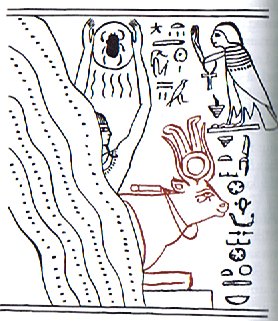

... it is not too much to
assume that the Egyptians observed, and taught
people to observe, the sun on the horizon. This
being so, the chances are that at first they
would observe the stars on the horizon too, both
stars rising and stars setting; this indeed is
rendered more probable by the very careful way
in which early astronomers defined the various
conditions under which a star can rise or set,
always, be it remembered, in relation to the sun
... Although the Egyptians knew nothing about
telescopes, it would seem that they had the same
problem before them which we solve by a special
arrangement in the modern telescope - they
wanted to keep the light pure, and to lead it
into their sanctuary as we lead it to the
eyepiece. To keep the light that passes into the
eyepiece of a modern telescope pure, we have
between the object-glass and the eyepiece a
series of what are called diaphragms; that is, a
series of rings right along the tube, the inner
diameter of the rings being greatest close to
the object-glass, and smallest close to the
eyepiece; these diaphragms must so be made that
all the light from the object-glass shall fall
upon the eyepiece, without loss or reflection by
the tube. These
apertures in the pylons and separating walls of
Egyptian temples exactly represent the
diaphragms in the modern telescope
...
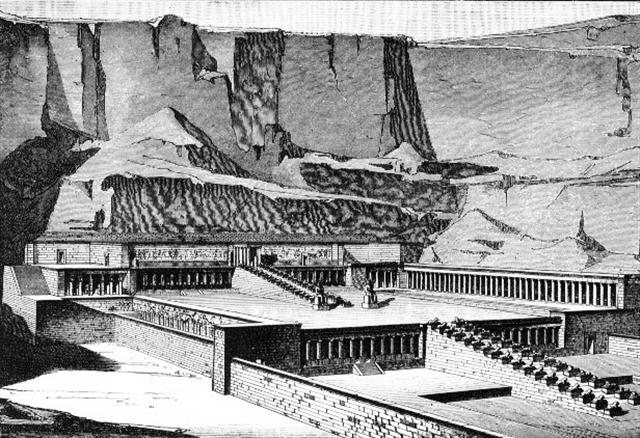
|























